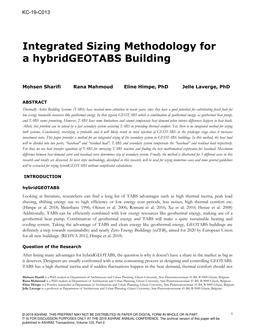Click here to purchase
Thermally Active Building Systems (TABS) have received more attention in recent years, since they have a good potential for substituting fossil fuels for low exergy renewable resources like geothermal energy. In that regard, GEOTABS which is combination of geothermal energy, as geothermal heat pump, and TABS seems promising. However, TABS have some limitations and cannot compensate heat demand when intense differences happen in heat loads. Albeit, this problem can be solved by a fast secondary system assisting TABS in providing thermal comfort. Yet, there is no integrated method for sizing both systems. Conclusively, oversizing is probable and it will likely result in total rejection of GEOTABS in the predesign stage since it increases investment costs. This paper provides a method for an integrated sizing of the secondary system in GEOTABS buildings. In this method, the heat load will be divided into two parts, “baseload” and “residual load”. TABS and secondary system compensate the “baseload” and residual load respectively. For that, we use heat transfer equations of TABS for surveying TABS reaction and finding the best mathematical expression for baseload. Maximum difference between heat demand curve and baseload curve determines size of secondary system. Finally, the method is illustrated for 5 different cases in this research and results are discussed. In next steps methodology, developed in this research, will be used for sizing numerous cases and some general guidelines will be extracted for sizing hybridGEOTABS without complicated calculations.
Citation: 2019 Annual Conference, Kansas City, MO, Conference Papers
Product Details
- Published:
- 2019
- Number of Pages:
- 9
- Units of Measure:
- Dual
- File Size:
- 1 file , 1.1 MB
- Product Code(s):
- D-KC-19-C013
